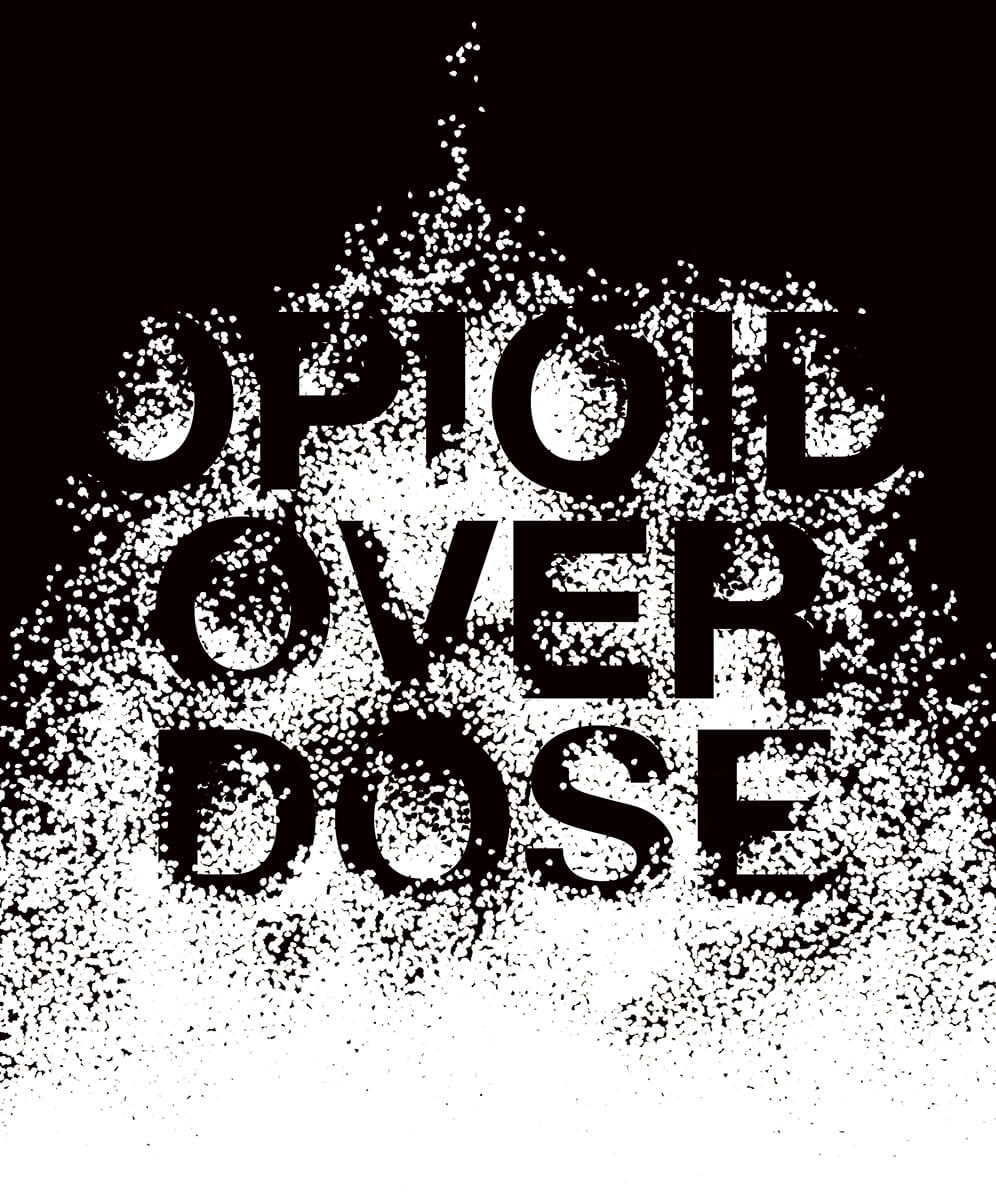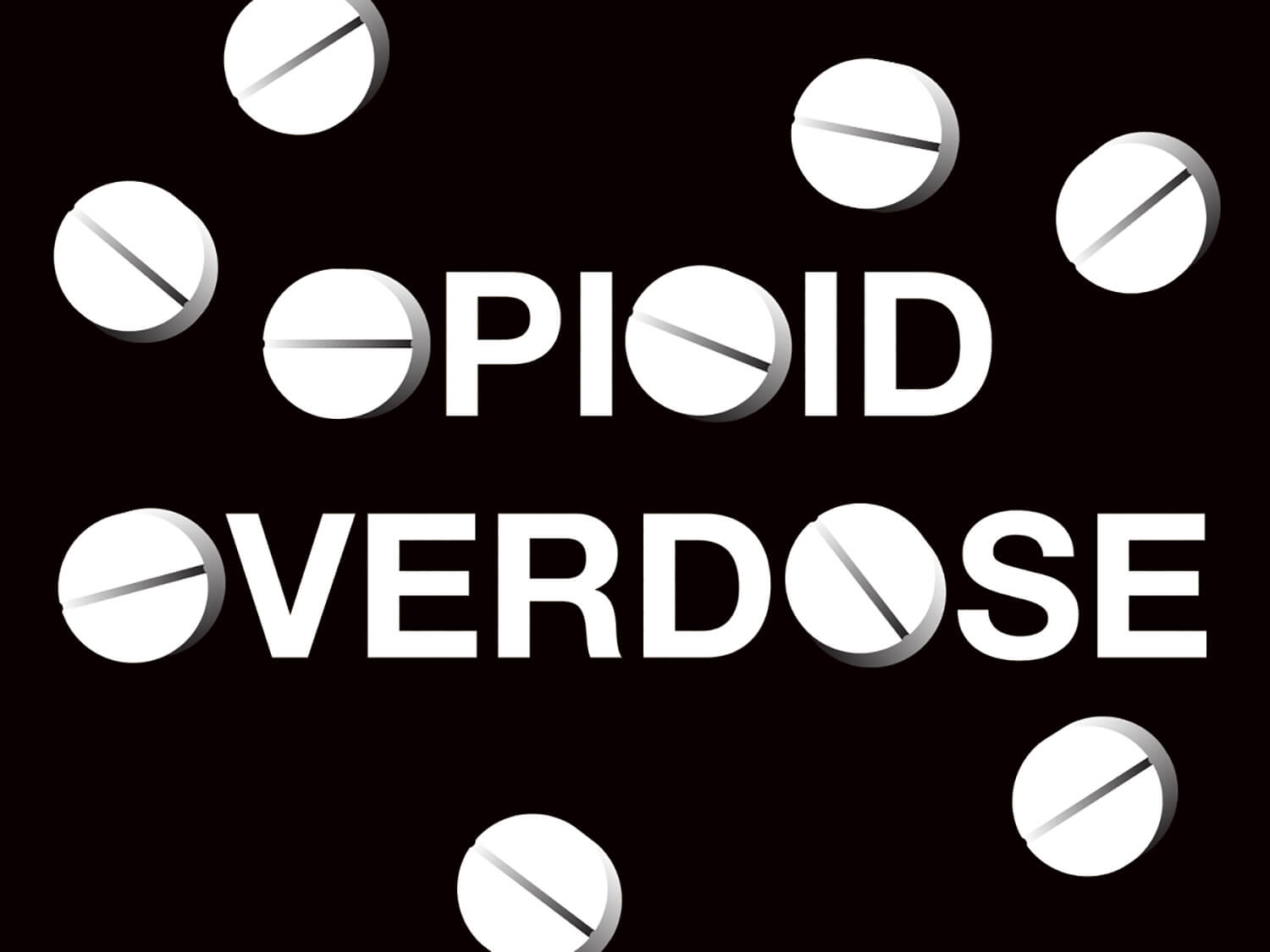
Jodi Phelan opens the door of a public washroom in a downtown back alley. She’s the general manager of Boyle Street Ventures, a subsidiary of Boyle Street Community Services, whose staff monitor public restrooms throughout Edmonton. “People who use drugs go in here to hide, to shoot up where no one else can see them,” Phelan says. In this one, Boyle Street recently recorded 67 overdoses in a timespan that’d usually see 10. A colleague opened the door one morning and found a corpse. But, this time, Phelan exhales relief. No one’s inside.
Between January and August 2021, more than 1,000 Albertans died from drug poisoning, on track to surpass 2020’s record of 1,154 (for comparison, 1,211 Albertans died of COVID in 2020). And overdose deaths are rising faster in Edmonton than the rest of Alberta — in the first two months of 2021, they increased 157 per cent over the year prior. Boyle Street used to have its own supervised consumption site, which saw as many as 15,000 visits in just six months. But like other sites — including the busiest in North America, in Lethbridge — it was shuttered during the pandemic at the behest of the Alberta government. The site at the George Spady Centre downtown started operating overnight, but it’s not enough. Just weeks after the Boyle Street closure, three men overdosed and died in a nearby park. “At least when they could go to the supervised consumption site, they knew they were safe,” Phelan says. She recently lost a colleague to an overdose, too. “She had two children. She was getting her life together. She was a beautiful person and now she’s gone.”
The COVID-19 pandemic has thrown fuel on an overdose crisis already aflame. Boots on Ground Street Outreach & Harm Reduction, a team that provides safer use supplies to homeless Edmontonians, formed after this precipitous rise in drug poisonings. Angie Staines, one of its core members, has lived it first-hand: Her son has been using for a decade. “He used to average an overdose every few months,” she says, “but I’ve lost count of how many times he’s overdosed since COVID hit.”

In their years-long search for help, they’ve faced stigma from the health-care system, distrust from social services and despair about the preventable mass death that surrounds them. “It’s a complete policy failure,” she says. “But I think they fully expect groups like Boots on Ground or Boyle Street to be out there reversing overdoses. They know somebody else will pick up the pieces.”
A teenager with blue lipstick sleeps on the sidewalk, only it’s not lipstick and she’s not sleeping. It takes two naloxone kits to revive her. A woman dies of an overdose nearly naked in the winter cold. An EMT in a hazmat suit lifts a limp little body into an ambulance. These scenes are seared in Judith Gale’s memory, haunting her treks through the streets of Edmonton.
During the pandemic, Gale founded the Edmonton chapter of Bear Clan Patrol, a frontline outreach organization reversing overdoses and distributing meals and clothing. “We have to take care of one another, especially during this time of COVID-19, when it feels like our brothers and sisters have been left to the wolves,” Gale says. She says overdoses used to take one naloxone kit — three vials — to reverse. “But now, because of how strong carfentanil is, I’ve heard of people using eight vials.”
Supply chain disruptions affect underground markets, too. When borders close, manufacturers can’t procure certain substances, so they seek synthetic analogues like fentanyl and the much deadlier carfentanil. At the time of writing, half of Edmonton’s opioid deaths in 2021 involved carfentanil, 10 times as many as Calgary’s. Pure heroin is rare these days. Staines talked to people who reported excessive bleeding; she learned the supply was cut with warfarin, a blood thinner originally (and still) used as rat poison. That’s why groups such as Boots on Ground advocate for a safe, legal, regulated drug supply.
Dr. Mohit Singh, a physician and addiction psychiatrist (and a Top 40 Under 40 alumnus) in Edmonton, says “The fentanyl concentration and potency seem stronger, and we’re seeing other substances, like benzodiazepines, cut into the opioids. When you mix two central nervous system depressants, you increase the likelihood of an overdose by magnitudes.” Singh, who’s also a clinical lecturer at the University of Alberta, has seen an escalation of overdoses, presentations to hospital and EMS calls during the pandemic. He works with Edmonton’s Opioid Dependency Program, which provides opioid agonist therapy, including with methadone, suboxone and long-acting morphine, as well as injectable opioid agonist treatments.
“There’s tremendous evidence behind how this approach helps people stabilize their lives,” he says. Still, these treatments aren’t accessible to everyone, even though the province stated in a December release that $140 million is being invested over the next four years to fund 8,000 new treatment spaces.
Other factors have exacerbated the opioid crisis during the pandemic: Less access to supervised consumption sites or treatment and recovery programs; reduced capacity at shelters; and omnipresent stigma, which drives people to use alone. Isolation is the common thread. The pandemic has isolated us from our families and communities, and isolation intensifies the overdose crisis.
“We know alcohol and cannabis usage has increased during the pandemic,” says Alyssa Miller, strategic director of Boots on Ground. “When you have folks with chronic physical and emotional pain, using illicit substances, intergenerational trauma — and then you add a pandemic to that, which reduces your ability to access services — well, what do the rest of us do? It’s a different drug but it fills the same distress.”
On a corner near 97th Street and 118th Avenue one morning, approximately seven overdoses (police would not confirm the number) occurred before 10 a.m. That’s when Jay Ball, executive director of the Alberta Avenue Business Association, made a request of the 200 businesses he represents. “I said, ‘We can get our hands on some naloxone kits — would anyone like one?’ Right away, I started to get emails. Business owners see people in distress on a weekly basis, and they want the tools to help.” In his opinion, naloxone kits are “the most important tools for businesses or members of the public” in helping address overdoses. Like a growing number of Edmontonians, Ball and the business owners along 118th Avenue are taking the crisis into their own hands.
Yet naloxone kits only reverse overdoses. Preventing them is another story. Among researchers, frontline workers, academics and people who use drugs, there’s relative consensus on the kind of evidence-based approaches needed: supervised consumption sites, opioid agonist therapy or injectable opioid agonist treatments, drug-checking programs and safe supply. But where these approaches are implemented at all, they’re not robust enough, and they’re hostage to political whims.
In 2018, Edmonton hosted a conference where 93 organizations called on the provincial and federal governments to decriminalize possession of all drugs for personal use, expand legal access to safe drugs for people with substance use disorder, and expand the availability of harm reduction services. These ideas even have high-profile champions: During his City Hall tenure, former councillor Scott McKeen introduced a motion calling for federal funding for a safe supply pilot program. “Criminalization of addiction is counterproductive,” he says. “We’ve been immature as a society in recognizing that addiction is a side effect of trauma and mental illness, and it’s time we grew up.” But when he talked to the provincial government, he learned “the words ‘safe supply’ are not allowed in the hallways of the Legislature.” The UCP is ideologically opposed to safe-supply approaches for the same reason it opposed fourth-wave pandemic restrictions until 30 Albertans were dying every day: This is Alberta, where individualism and the free-market reign supreme. Yet with COVID as with overdoses, individuals can only do so much to stem the tide.
Instead of safe-supply, the Alberta government announced in December a plan to fully cover the cost of Sublocade, a 30-day treatment that reduces cravings and overdose risk in addicts. Alberta also bumped up funding to its Virtual Opioid Dependency Program to $6.4 Million annually.
Pandemic and overdose casualties show us how easily we can turn a blind eye to mass death if we choose. They show us how dehumanizing, exculpatory terms like “comorbidities” downplay preventable deaths, and how words like “junkie” rationalize them. For meaningful redress, we need to understand and then dismantle the mechanisms by which the deaths of our neighbours become part of the machinery humming in the background. The callousness toward preventable pandemic deaths was foretold by callousness toward preventable overdose deaths. What future horrors does today’s carnage foretell? What pieces will be left to pick up?
Even before COVID-19 changed the way we live, a mental-health crisis was already here, along with a massive increase in opioid overdoses. More and more young people are taking their own lives.
Those troubling trends have only grown through the COVID pandemic. Add to that the strain the virus has placed on our health-care professionals, and we’re heading to a great reckoning. What happens when the people who are charged with taking care of us are also asking for help?
We take a closer look at how the mental-health crisis drives us to extremes. If you are feeling the strain, it’s important to know you are not alone. Help is out there. Alberta Health Services’ mental-help line is available 24/7, at 1-877-303-2642. The addiction help line number is 1-866-332-2322. When it all becomes too much, the bravest thing you can do is ask for help. Please, do not suffer in silence.
This article appears in the Winter 2022 issue of Edify








